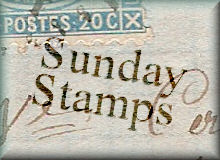For the 600th anniversary of Froissart's Chronicles Belgium celebrated with this stamp of him finishing off volume 1, or at least I presume that it the significance of the date. Jean Froissart wrote about the major events in the turbulent 14th century and Volume 1 starts with Edward II and rattles through battles, kings and the black death. Travelling around England, Scotland, Wales, France, Flanders and Spain he was present, researched or interviewed those that were there as history unfolded and is one of the important sources for historians of the first half of the 100 years war, although he is not totally reliable. The Chronicles survive in 100 beautifully illuminated manuscripts and run to 3 million words, the whole has never been published,
SteveReads translates a paragraph of his style. The chair on the stamp looks remarkably uncomfortable, hope there are some cushions in there.
From the 14th Century I'm going further back to a time unknown anywhere from 12th to 7th century BC to a work that lies at the heart of western literature.
The epics of Homer. Not written but memorised and spoken, the hexameter verse acting as a memory aid. Exactly when the poems took on a written form is unknown but the process is thought to begin about the 8th Century BC. The stamp on the left illustrates Homer's Odyssey and shows Odysseus (Ulysses) escaping from Polyphemus's cave. Polyphemus was one of the Cyclops who ruled over Sicily. When Odysseus landed on the island during his journey from home from the Trojan Wars the monster made him and twelve of his crew captives; six of them he ate, and then Odysseus contrives to blind him and escapes with the rest of the crew when they tie themselves underneath the sheep, the blind Polyphemus only feels the top of the sheep as he lets them out to graze. Odysseus leaves last, undetected, underneath the belly of of the largest ram.
The other stamp is when Odysseus arrives home to Ithica and wreaks revenge on Penelope's suitors. The scene shows the archery competition when only he is strong enough to string the bow and shoot it through a dozen axe heads.
 |
| 1966: National Scientific Institutes |
Lastly a scholar at the Royal Library of Belgium, the stamp commemorates its scientific library and its international collection, available to all readers. Founded in 1837 its history really started with the Library of Burgundy, a collection of 900 manuscripts acquired in the 15th Century by the Dukes of Burgundy (when today's Belgium was part of the Burgundian Netherlands). Its other role is as a national library, to acquire all Belgium publications. As well as books it also holds manuscripts, maps, coins, medals, sheet music and of course - stamps.
An entry to
Viridian Postcard's Sunday Stamps theme of "Music, Literature or Books"





6 comments:
Lovely choices for the theme and thanks for sharing the history relating to each. Yes I always wonder about those style of seats.
Think of the work involved in copying over a book! And writing it in the first place. Like the Greek stamps very much too. A classic story, shown in a classic art form the vase.
Thank you for joining in today.
Interesting stamps. I especially like the style of the first one.
The uncomfortable seating may have been to keep himself awake for his writing!
A really educational post. I had not heard of Froissart. Not a bad stamp amongst them.
what a set of very interesting stamp filled with history.amazing!!!!
My Sunday Stamp: Literature and Books
Post a Comment